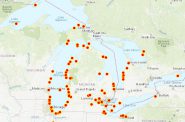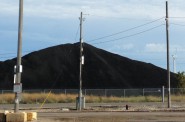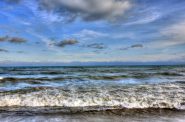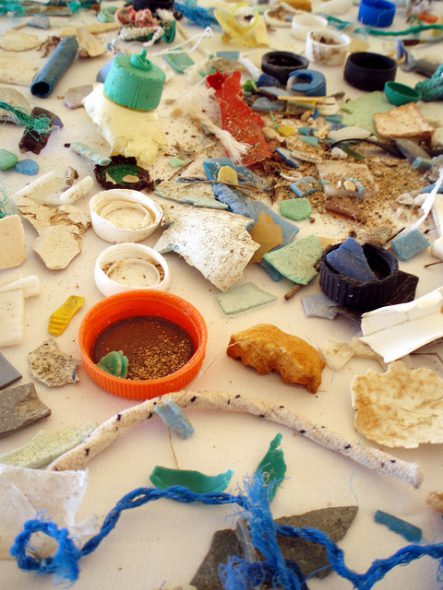Tracking Great Lakes’ Plastic Pollution
Lake Michigan has the biggest problem. New technique measures, tracks it.
Researchers have developed a new way to source, track and estimate concentrations of plastic pollution in the Great Lakes.
The new mathematical model using National Oceanic and Atmospheric Administration data has discovered 80 percent of the plastic pollution sinks while the other 20 percent gathers on the shoreline or breaks down into micro plastics. And plastic from Chicago often crosses Lake Michigan and ends up on Michigan beaches. Lake Michigan contains the greatest concentration of plastics in the Great Lakes.
The model was developed by two Rochester Institute of Technology professors.
“The amount of plastic that’s entering our waters is alarming and it is certainly something that we want to keep an eye on,” said Doug Pearsall, senior conservation scientist at The Nature Conservancy.
Pearsall said this research can help conservationists make better decisions regarding how to clean and preserve the Great Lakes region.
“It gives us the first number to draw on in terms of the amount of plastic entering the lakes and also the amount of plastic floating on the surface,” said co-developer Matthew Hoffman, an assistant professor in mathematical sciences.
Such measurements are needed to accurately study the plastic’s effect on the environment, Hoffman said.
The goal is to understand the sources of plastic pollution around the lakes and model how pollution flows due to natural currents, wind patterns and the water flow from some lakes into others, said Eric Hittinger, who also developed the model and is an assistant public policy professor.
The model can run as long as it is updated with data. It does not run in real time, Hittinger said
Six years of data about currents that were measured every three hours are used in the model, Hoffman said
“The real limitation is in the data concerning actual currents around the lakes,” Hittinger said. “If we had more years of data, we could actually run it in longer timeframes.”
Hoffman said he was initially surprised that pollution does not remain floating in the middle of the lake but is often pushed until it accumulates on beaches, sometimes across country and state borders.
Lake Michigan contains the greatest concentration of plastics and accounts for most of the data the model uses, Hoffman said.
It is possible that 80 percent, or more, of the plastic in the lakes sinks, Hoffman said. Much of it breaks down into smaller microplastics over time.
The researchers speculated that much of the plastic would float but the amount of plastic they expected to enter the lakes was significantly higher than what they estimated was actually on the surface, Hoffman said.
This prompted Hoffman and Hittinger to wonder where the plastic is going and how they can find it.
The model they developed only focuses on surface flow. Next they want to develop a three dimensional model, the researchers said.
“This work, we hope, can really contribute to all the other research about plastics in the Great Lakes,” Hittinger said. “This could give other researchers a geographic area to focus on and show them, how to focus or interpret their measurements.”
This story was originally published by Great Lakes Echo.
Great Lakes Echo
-
Tracking Balloon Debris in Great Lakes
 Dec 3rd, 2019 by Tasia Bass Cont
Dec 3rd, 2019 by Tasia Bass Cont
-
Coal Ash Pollutes Midwest States
 Jun 5th, 2019 by Andrew Blok
Jun 5th, 2019 by Andrew Blok
-
Extreme Changes Forecast for Great Lakes
 May 21st, 2019 by Cassidy Hough
May 21st, 2019 by Cassidy Hough






















A bottle return fee is the only thing that will persuade consumers to return plastic bottles and that will require a buy in by the retailers. Here in Costa Rica where we are visiting, a beer bottle requires a deposit equivalent to a dollar. You can bet the bottles go back. But the problem of plastic in the lake probably goes far beyond bottles, so we need some creative thinking about how to place a value on other types of containers made from plastic to encourage conservation. Great study, as the first step is identifying and naming the problem.